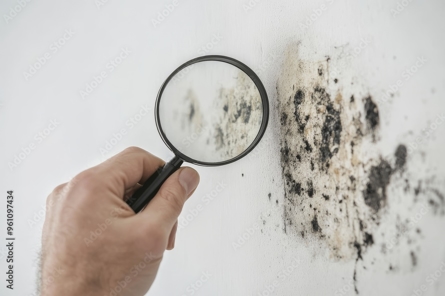Water damage in any home can be a challenge, but in Lehi, Utah, it comes with its own set of unique concerns. While Utah’s dry climate might seem like a safeguard against mold, the reality is more complex. Factors such as the proximity to Utah Lake, snowmelt from the Wasatch Range, and modern construction practices mean that homes in Lehi face higher risks of mold growth after water damage. In fact, despite the state’s arid environment, Lehi homes are 35% more likely to experience hidden mold growth during the spring months due to increased irrigation and snowmelt. This guide will help homeowners understand where to look for mold, identify signs of hidden growth, and know when to call professionals to address potential issues.
Where to Look for Mold After Water Damage
Mold growth often starts in hidden areas of the home, making thorough inspection crucial after water damage. In Lehi, specific construction trends and environmental factors create hot spots for mold growth. Below is a room-by-room inspection guide tailored to these unique challenges.
Basements - Basements are particularly prone to mold growth in Lehi, especially those built into hillsides or with poor drainage systems. Finished basements in newer developments often face added risk due to rapid construction methods during the 2010-2020 housing boom. Areas to inspect include:
Foundation Walls - Look for discoloration or bubbling paint. Moisture levels should remain below 15% to avoid mold growth.
Carpeting - Pull back corners to check for water stains or musty smells.
Storage Areas - Inspect cardboard boxes and stored materials for dampness, which often goes unnoticed.
Attics - Attics in Lehi homes often experience poor ventilation due to mountain wind patterns, trapping moisture inside. Key areas to inspect:
Roofing Materials - Check for leaks or staining around vents and skylights.
Insulation - Look for wet spots or signs of compression.
Eaves and Rafters - Examine for black or green patches, especially on north-facing sides that receive less sunlight.
Crawl Spaces - Crawl spaces near irrigation lines or those built without proper vapor barriers are a haven for mold. Inspect for:
Additional Problem Areas - Homes in Traverse Mountain and neighborhoods close to Utah Lake face moisture challenges due to varying elevations. These conditions can lead to:
Mold growth in HVAC systems, where condensation builds up.
Hidden mold behind bathroom walls, particularly if plumbing was rushed or poorly sealed during construction.
Signs of Hidden Mold Growth in Utah Homes
In high-elevation areas like Lehi, mold can be elusive. The dry climate often masks musty odors, and mold may grow unnoticed until it spreads extensively. Here are specific signs to watch for:
Visual Clues
Stains: Watch for watermarks on ceilings, walls, or floors.
Peeling Paint or Wallpaper: This could indicate moisture build-up.
Spots on Drywall: Recent construction often uses drywall brands that are more susceptible to mold in humid conditions.
Subtle Smells - While Utah’s dry air often prevents strong odors, be aware of:
Health Symptoms - High-elevation homes can intensify mold-related health symptoms, which may include:
Persistent coughing or sneezing.
Skin rashes or irritation.
Worsened asthma or allergy symptoms in damp areas of the home.
Testing Moisture Levels - In Lehi’s climate, using a moisture meter is essential. Mold thrives at moisture levels above 20%. Check areas like:
Bathrooms and laundry rooms.
Walls and floors around windows or exterior doors.
Low corners of basements and crawl spaces.
Professional Mold Inspection Tools and Techniques
While a homeowner’s inspection can catch visible mold, professional inspections often reveal hidden growth. ServiceMaster Restore by A3 Disaster Services utilizes advanced tools and techniques to detect mold in hard-to-see areas.
Thermal Imaging - Thermal imaging cameras detect temperature variations caused by moisture buildup. This technique is particularly useful in newer homes where improperly installed vapor barriers might conceal leaks.
Air Quality Testing - Air sampling identifies mold spores that aren’t yet visible. Elevated spore counts in specific areas can pinpoint the source of hidden mold growth.
Surface Testing - Using swabs or tape lifts, professionals test surfaces for mold presence. This is especially important in Lehi’s homes where drywall or insulation materials may promote hidden mold growth due to their composition.
Inspection Protocols for Flood-Affected Homes - Flash floods and irrigation failures in Lehi can leave homes with significant water damage. A professional inspection typically includes:
Checking all levels of the home for water migration patterns.
Assessing crawl spaces and basements for residual water.
Identifying weak points in modern building materials susceptible to mold.
The Value of Professional Mold Inspections
Water damage in Lehi homes requires prompt and thorough attention. From basements vulnerable to hillside moisture to attics with poor ventilation, every part of a home needs careful inspection after water damage. While homeowners can take initial steps to identify mold, Utah’s unique environmental challenges make professional inspections critical.
ServiceMaster Restore by A3 Disaster Services understands Lehi’s specific risks. With expertise in local construction methods and climate conditions, we provide comprehensive mold inspection and remediation services to protect your home. If you suspect mold growth after water damage, don’t wait. Call us today for a professional evaluation and ensure your home remains safe and healthy for years to come.


